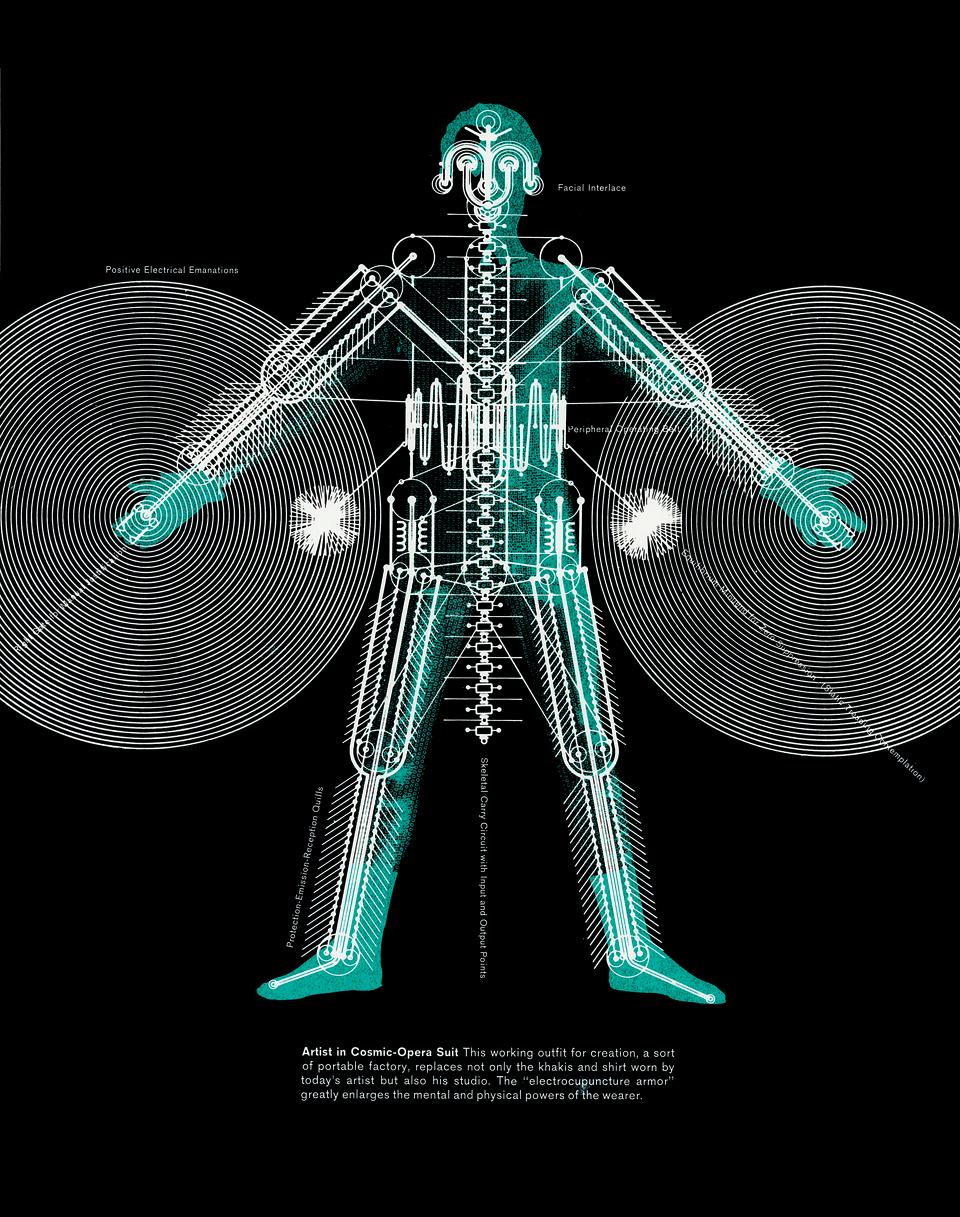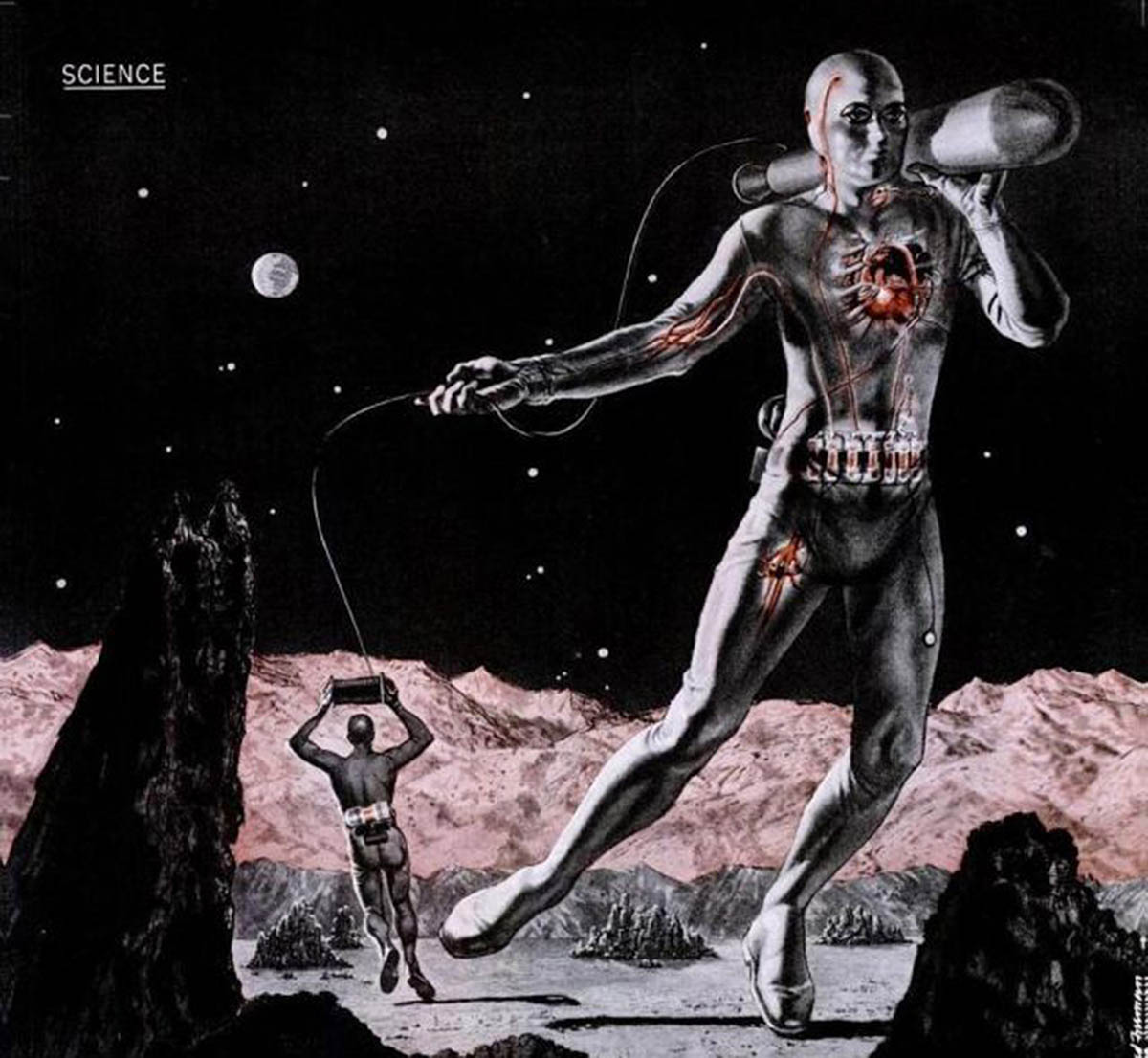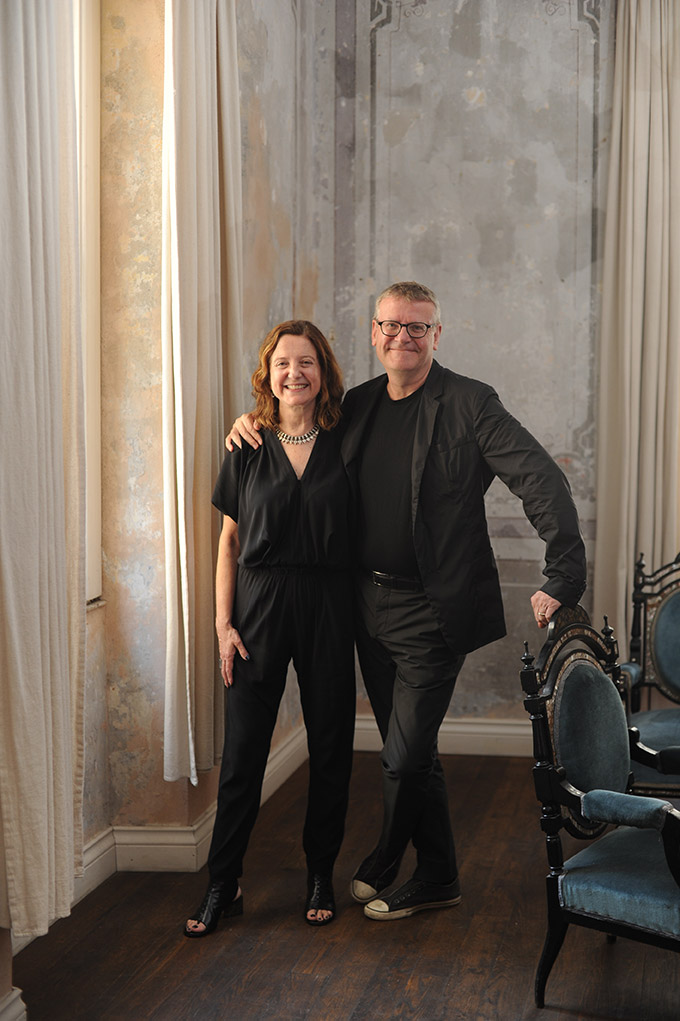Submitted by Berrin Chatzi Chousein
Participants and projects announced for the 3rd Istanbul Design Biennial
Turkey Architecture News - Oct 05, 2016 - 15:20 18034 views

The 3rd Istanbul Design Biennial has announced more than 70 projects from 5 continents by designers, architects, artists, theorists, choreographers, filmmakers, historians, archaeologists, scientists, labs, centres, institutes and NGOs in 5 main venues; Galata Greek Primary School, Studio-X Istanbul and Depo in Karaköy, Alt Art Space in Bomonti, and Istanbul Archaeological Museums in Sultanahmet.
Organised by the Istanbul Foundation for Culture and Arts (İKSV) and co-sponsored by ENKA Foundation, Petkim and VitrA, the 3rd Istanbul Design Biennial will take place from 22 October to 20 November 2016. Entitled Are We Human?: The Design of the Species: 2 seconds, 2 days, 2 years, 200 years, 200,000 years, and curated by Beatriz Colomina and Mark Wigley, the biennial will explore the intimate relationship between the concepts of “design” and “human.”

Art Fiction by François Dallegret (Canada), is one of the participants of the 3rd Istanbul Design Biennial
In addition to the projects of this core multidisciplinary group, the work of a dense array of international writers, video makers and designer researchers will be presented in the same venues and online to stimulate a new kind of conversation about design.
The 3rd Istanbul Design Biennial will explore the intimate relationship between “design” and “human” over a time period that spans from the last 2 seconds to the last 200,000 years. Organised by İKSV and co-sponsored by ENKA Foundation, VitrA and Petkim, the 3rd Istanbul Design Biennial is held free of charge (except the Istanbul Archaeological Museums will require a museum ticket).

A Minor History of Cyborg Man by Lydia Kallipoliti and Andreas Theodoridis (Greece/USA)
More than 70 projects presented in 4 “clouds”
Aimed at rethinking design for an age in which design has gone viral, the biennial is organised in 4 overlapping “clouds” of projects: Designing the Body, Designing the Planet, Designing Life, and Designing Time.
Designing the Body explores all the different ways in which the human body itself is a highly unstable artefact that is continually reconstructed, from the unique way our hands work to the latest research on the brain. Every dimension of the human is continuously adjusted, augmented or replaced.
Designing the Planet asks us to rethink the human design of vast territories and ecologies. The human radiates design in all directions and encrusts the planet in layer upon layer of artifacts as a kind of geology.
Designing Life looks at the new forms of mechanical, electronic and biological life that are being crafted. A fusion of machines, organisms, computation, and genetics is moving from the laboratory into everyday life, the land, the air, and the oceans.
Designing Time presents a unique archaeology ranging from the deep time of the very first human tools and ornaments to the ways in which social media allows humans to redesign themselves and their artefacts in as little as 2 seconds.
The invited projects/participants of the 3rd Istanbul Design Biennial are:
• The Shepherd, Bager Akbay (Turkey)
• Mutant Space, Atif Akin (Turkey)
• The Missing Half Second, Zeynep Çelik Alexander (Turkey), Vanessa Heddle, Elliott Sturtevant (Canada)
• Mixed Being, Lucia Allais (United Kingdom/Italy)
• Archaeology of Things Larger than Earth, Pedro Alonso & Hugo Palmarola (Chile)
• Milano Animal City, Stefano Boeri (Italy)
• Window Behaviorology, Atelier Bow-Wow / Yoshiharu Tsukamoto Lab. at Tokyo Institute of Technology / YKK AP Window Research Institute (Japan)
• Space Design by Galina Balashova, Galina Balashova (Russia), Philipp Meuser (Germany)
• Fictional Humanisms: A Critical Reportage, Marco Brizzi & Davide Rapp (Italy)
• 1 Brain, 100 Billion Neurons, 100 Trillion connections, Brown Institute for Media Innovation, Center for Spatial Research with the Zuckerman Institute, Columbia University (USA)
• Texas City Landscan, Center for Land Use Interpretation (USA)
• Conflict Urbanism: Aleppo, Laura Kurgan (South Africa/USA) and the Center for Spatial Research (USA)
• The Immortal, Revital Cohen (United Kingdom), Tuur Van Balen (Belgium)
• Going Fluid: The Cosmetic Protocols of Gangnam, Common Accounts, Igor Bragado (Spain), Miles Gertler (Canada)
• Art Fiction François Dallegret (Canada)
• Human Treasure, Tacita Dean (United Kingdom)
• Kontrollraum / Control Room, Thomas Demand (Germany)
• Unspoken, Diller Scofidio + Renfro (USA)
• World Brain: Automatism, Stéphane Dougoutin (France), Gwenola Wagon (Canada)
• The Unstable Object (II), Daniel Eisenberg (USA)
• You will not be able to do it, Keller Easterling (USA)
• The Designer Designed by the Humans, estudioHerreros (Spain)
• Portable Indo Pacific, Fake Industries Architectural Agonism and UTS (Spain/Australia)
• A Natural History of Human Rights, Forensic Architecture in collaboration with FIBAR: Baltasar Garzón, m7red and Irendra Radjawali (United Kingdom/Spain/Brazil/Argentina)
• City of Abstracts and Lectures from Improvisation Technologies, William Forsythe (Germany/USA)
• The Breaking Point, or The Paradox of Origins, Anselm Franke (Germany)
• Welcome to the Anthropocene, Globaïa (Canada)
• Space Debris 1957-2016, Stuart Grey (United Kingdom)
• 5TH HELENA, Mathew Hale (United Kingdom)
• 51Sprints, Het Nieuwe Instituut (Netherlands)
• City of 7 Billion, Joyce Hsiang, Bimal Mendis (USA)
• MUSSELxCHOIR, Natalie Jeremijenko (Australia)
• GUINEA PIGS; A Minor History of Engineered Man, Lydia Kallipoliti, Andreas Theodoridis (Greece/USA)
• Anatomy and Safe, Ali Kazma (Turkey)
• “It is obvious from the map,” Thomas Keenan (USA) and Sohrab Mohebbi (Iran), with Charles Heller (USA) and Lorenzo Pezzani (Italy)
• Embodied Computation, Axel Kilian (Germany)
• The Perfect Human, Jørgen Leth (Denmark)
• The Anthropophagic Body and the City: Flavio de Carvalho, Jose Lirá (Brazil)
• Open Future, The Living / Sculpting Evolution Group, MIT Media Lab (USA)
• Maropeng Acts I & II, Lesley Lokko (Ghana)
• Memex, Marshmallow Laser Feast, Analog, FBFX, Duologue (United Kingdom)
• • Köçek Dance Floor, Mona Mahall (Germany) and Asli Serbest (Turkey) m-a-s-e-r
• Glitter Disaster, McEwen Studio (USA)
• The Institute of Isolation, Lucy McRae in collaboration with Lotje Sodderland (United Kingdom)
• Ines-table, Enric Miralles (Spain) & Benedetta Tagliabue (Italy)
• Manchas Mies, Domi Mora (Spain)
• An Unfinished Encyclopedia of Scale Figures Without Architecture / Model Furniture, MOS Architects (USA)
• Architektur / Räume / Gesten, Antoni Muntadas (Spain)
• Nine Islands: Matters Around Architecture, NEMESTUDIO, Neyran Turan & Mete Sonmez (Turkey)
• Please let me go, away…, New Territories / M4 with Pierre Huyghe (Thailand/France)
• Frederick Kiesler’s Magic Architecture: Caves, Animals, and Tools from the Prehistoric to the Atomic Era, Spyros Papapetros (Greece)
• A Media Archaeology of Ingenious Designs, Jussi Parikka (Finland), Ayhan Ayteş (Turkey)
• Objects of Daydreaming, PATTU, Cem Kozar, Işıl Ünal (Turkey)
• South Africa: Crossing the River Without a Bridge, Martha Rosler (USA)
• Beirut Bombastic!, Rana Salam (Lebanon)
• White on White, Alfredo Thiermann & Ariel Bustamante (Chile)
• Spidernauts… Dark webs…, Tomás Saraceno (Argentina)
• The Connectome: A New Dimension of Humanity, Seung Lab, H. Sebastion Seung & Amie R. Sterling (USA)
• The Visit, SO? (Turkey)
• Autonomy of Images, Hito Steyerl (Germany)
• Portable Person, Studio Works (USA)
• Archaeology of Violence (The Forest as Design), Paulo Tavares (Brazil) & Armin Linke (Germany)
• The Microbial Design Studio: 30-day Simit Diet, Orkan Telhan (Turkey)
• Museum of Oil—Deep Space and After Fire Territorial Agency (Italy/Finland/United Kingdom)
• Voyager—Humanity in Interstellar Space, Universal Space Program, Evangelos Kotsioris (Greece) and Rutger Huiberts (Netherlands)
• The Hand—The Whole Man in Miniature, Madelon Vriesendrop (Netherlands)
• Detox USA, Mark Wasiuta (Canada), Florencia Alvarez (Argentina)
• Information Fall-Out: Buckminster Fuller’s World Game, Mark Wasiuta (Canada), Adam Bandler (USA)
• Delusional Mandala, Lu Yang (China)
• Virtual Interior Istanbul, Annett Zinsmeister (Germany)

Embodied Computation, Axel Kilian (Germany)
6 Curatorial Interventions
Over the course of the last year, Colomina and Wigley held graduate seminars on “What is Design?” at Princeton University and Columbia University, exploring a wide range of topics related to the theme of the biennial. A joint team of Princeton and Columbia studentsworked over the summer with the curatorial team to prepare a set of six curatorial interventions to be inserted into the main exhibition of the Biennial. These interventions – Design Has Gone Viral, The Unstable Body, Are We Normal?, Enclosed by Mirrors, Homo-Cellular, and Design in 2 Seconds – present historical and contemporary research to supplement the work of the invited contributors to the Biennial and deepen the reflection on the central question: Are We Human?
In addition to the curatorial interventions, the biennial will include two special projects: the famous “Transparent Man” from the Deutsches Hygiene Museum will return to Istanbul for the first time since 1938 to be exhibited in the Designing the of the Body section, and a set of casts of Neolithic human footprints in what is now Istanbul is being exhibited in the Designing Time section along with some of the original footprints in the original soil.

Kontrollraum / Control Room, Thomas Demand (Germany)
SUPERHUMANITY project in collaboration with e-flux
The 3rd Istanbul Design Biennial inaugurated the SUPERHUMANITY on-line project with over fifty writers, scientists, artists, architects, designers, philosophers, historians, archaeologists addressing “Self-Design.” Nikolaus Hirsch and Anton Vidokle of e-flux, in collaboration with Beatriz Colomina and Mark Wigley, commissioned 2000 word contributions from different fields that respond to the biennial’s theme ARE WE HUMAN? by exploring and challenging our understanding of the relationship between concepts of “self” and “design”. These contributions appear online as a series of dispatches circulated by e-flux as well as an installation in the biennial exhibition, and subsequently as a book. The first text went online on Thursday, 22 September and a new text will be posted every few days over the next months.
The list of authors includes: Lucia Allais, Julieta Aranda, Shumon Basar, Ruha Benjamin, Franco 'Bifo' Berardi, Daniel Birnbaum & Sven-Olov Wallenstein, Ina Blom, Benjamin H. Bratton, Giuliana Bruno, Eduardo Cadava, Zeynep Çelik Alexander, Tony Chakar, Mark Cousins, Keller Easterling, Ruben Gallo, Liam Gillick, Joseph Grima, Boris Groys, Rupali Gupte & Prasad Shetty, Güven Güzeldere, Andrew Herscher, Tom Holert, Brooke Holmes, Hu Fang, Francesca Hughes, Andrés Jaque, Lydia Kallipoliti, Tom Keenan, Brian Kuan Wood, Laura Kurgan, Sanford Kwinter, Adrian Lahoud, Sylvia Lavin, Tom Levin, Lesley Lokko, MAP Office, Chus Martínez, Ingo Niermann, Ahmet Ögüt, Trevor Paglen, Spyros Papapetros, Paul Preciado, Raqs Media Collective, Juliane Rebentisch, Sophia Roosth, Martha Rosler, Felicity Scott, Jack Self, Hito Steyerl, Kali Stull & Etienne Turpin, Pelin Tan, Alexander Tarakhovsky, Paulo Tavares, Territorial Agency, Stephan Trüby, Eyal Weizman, Mabel O. Wilson, Liam Young, and Arseny Zhilyaev & Anton Vidokle.

Nine Islands: Matters Around Architecture, NEMESTUDIO, Neyran Turan & Mete Sonmez (Turkey)
Turkey Design Chronology
The curators of the 3rd Istanbul Design Biennial have also initiated a major long term research project into the last two centuries of Turkish design. Entitled Turkey Design Chronology, it is an attempt to bring together fields such as packaging, graphic design, communication and advertisement, housing, furniture, landscape, industrial buildings, and other fields which have not been addressed from the perspective of design yet, like lighting, toys, music, ceramics, health or non-governmental organisations, within a time frame starting from the Ottoman Tanzimat reform era (beginning around 1839) until today. A very large interdisciplinary team of Turkish experts in different fields called Curious Assembly is being coordinated by Pelin Derviş. One component of the project entitled Archive of the Ephemeral seeks to become a visual source on objects and spaces, through a collection of family photos and found photographs. Curious Assembly seeks to spark debate and reach others who may partake in these dialogues by highlighting an interconnected selection. To this end, part of Studio-X Istanbul will be turned into a research laboratory during the biennial, and topics highlighted in the chronology will be the focus of a series of events and panels. The project is also assembling a research library on design in Turkey that will act as a permanent open resource at Studio-X for designers and historians.
The Curious Assembly team includes: Amir Ahmadoghlu, Gökhan Akçura, İpek Akpınar, Yuvacan Atmaca, Ceren Balkan, Burçin Başyazıcı, Dilek Bektaş, Ali Berkman, Aslı Can, Cansu Cürgen, Bihter Çelik, Banu Betül Çiçek, Erhan Çiftçi, Ufuk Demirgüç, Pelin Derviş, Mihriban Duman, Ömer Durmaz, Nermin Er, Günbike Erdemir, Evin Eriş, Kerem Ganiç, Barış Gün, Selva Gürdoğan, Avşar Gürpınar, Gülay Gamze Güven, Nur Horsanalı, Orhan Irmak, Meliha Çağlayan İnce, Şafak Cudi İnce, Gökhan Karakuş, Balin Koyunoğlu, Yelta Köm, Liana Kuyumcuyan, Alper Maral, Arzu Nuhoğlu, Metehan Özcan, Fabio Salomoni, Beril Sarısakal, Ege Sevinçli, Hülya Kılıç Sirel, Elif Tan, Merve Taşlıoğlu, Funda Uz, Moira Valeri, Nur Elif Yurdaçalış and Nilay Yurtsever.

Beatriz Colomina and Marc Wigley. Image courtesy of IKSV
The Open Call for video submissions
Co-curators of the 3rd Istanbul Design Biennial Beatriz Colomina and Mark Wigley made an open international call for industrial and graphic designers, architects, artists, filmmakers, groups, associations, and non-governmental organisations from around the world to submit 2 minute videos that address the theme “Are We Human?” In a wonderful response, more than 200 videos from 68 cities in 36 countries were submitted. All the 146 videos that fulfilled the requirements of the Open Call will be presented in a dedicated section within the exhibition itself and will be online on the biennial website. An international and interdisciplinary jury evaluated all of them and selected 5 videos to be highlighted in the biennial exhibition and catalogue:
• Guesthouse, Merve Bedir (Turkey), Alican İnal (Netherlands)
• Atrophy, Jonathan Hadari, Simona Katsman (Israel)
• Autographsy, Alper Raif İpek (Turkey)
• Once in a Lifetime Opportunity, Görkem Özdemir (Turkey)
• Bedrooms of New York, Dimitris Venizelos (Cyprus)
No-Selfie Zone
The 3rd Istanbul Design Biennial carries the most complex design-work, the human itself, into the streets and online media, with images of people taking selfies in the mirror. The flash in these “no-selfies” interrupts the human image, masking the identity of the selfie-taker and enabling the viewer to imagine themselves or others in the image. The over exposed human becomes a mystery, a question mark. In their introduction to the exhibition catalogue, the curators suggest: "This biennial is a kind of mirror. The real work is not just what is on show but in the unexpected and inventive reactions to the surprising reflections one always sees in a mirror." Accordingly, the images invite people to reflect on the human and post their own “no-selfie” photographs on social media with the hashtag, #AreWeHuman.
Top image: Daft Punk by Mauser will feature under the Designing the Body section
